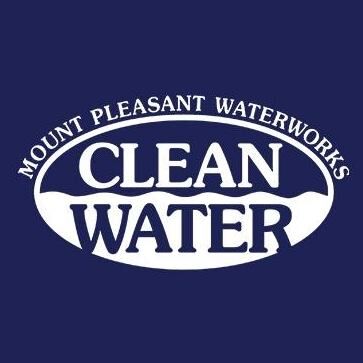MPW releases drinking water report – Post and Courier

Mount Pleasant Waterworks 2024 Annual Drinking Water Report
Overview and Compliance
Mount Pleasant Waterworks (MPW) has released its 2024 Annual Drinking Water Report, fulfilling the Environmental Protection Agency (EPA) mandate. The report confirms that the water supplied to customers throughout 2024 consistently meets or exceeds all applicable state and federal drinking water standards, aligning with Sustainable Development Goal (SDG) 6: Clean Water and Sanitation.
Water Quality Monitoring and Laboratory Testing
Jestine Deepe, MPW Laboratory Director, emphasized the critical role of rigorous sampling and testing in ensuring water quality. The in-house laboratory team’s efforts support water plant operators and distribution teams in delivering safe drinking water, contributing to SDG 3: Good Health and Well-being.
Water Source, Treatment, and Safety Information
The report details the source of MPW’s water, the treatment processes employed, and addresses common concerns regarding lead and fluoride levels, supporting transparency and community awareness as part of SDG 16: Peace, Justice, and Strong Institutions.
Lead and Copper Management
- MPW confirms no lead is present in water as it leaves treatment plants.
- Potential lead contamination may occur from older plumbing in customer premises.
- An inventory of all service line materials shows no lead service lines in MPW’s distribution system.
- Customers concerned about lead can access resources via MPW’s Lead Prevention webpage or request water testing by calling 843-884-9626.
This proactive approach supports SDG 6 by ensuring safe water infrastructure and reducing health risks associated with lead exposure.
Fluoride Information
- MPW does not add chemical fluoride during treatment.
- Trace amounts of naturally occurring fluoride exist due to the groundwater source, the Charleston Aquifer.
- Water is balanced strategically to optimize quality and corrosion control within the distribution system and customer plumbing.
- Further details are available on MPW’s Fluoride webpage.
This management aligns with SDG 3 by protecting public health through safe drinking water practices.
Community Engagement and Accessibility
- The full 2024 Annual Drinking Water Report is accessible online at www.mountpleasantwaterworks.com/2024ccr.
- Paper copies are available at the MPW Operations Center, 1619 Rifle Range Road, during weekday office hours.
- Customers can also request copies by contacting the Customer Service Center at 843-884-9626.
These measures promote SDG 11: Sustainable Cities and Communities by fostering informed and engaged residents.
1. Sustainable Development Goals (SDGs) Addressed or Connected
- SDG 6: Clean Water and Sanitation – The article focuses on the quality and safety of drinking water provided by Mount Pleasant Waterworks, which directly relates to ensuring availability and sustainable management of water and sanitation for all.
- SDG 3: Good Health and Well-being – By providing safe drinking water and monitoring contaminants such as lead and fluoride, the article addresses public health concerns and aims to reduce waterborne health risks.
- SDG 12: Responsible Consumption and Production – The article discusses water treatment processes and monitoring, which relate to sustainable management and efficient use of natural resources.
2. Specific Targets Under Those SDGs Identified
- SDG 6 Targets:
- 6.1 – Achieve universal and equitable access to safe and affordable drinking water for all.
- 6.3 – Improve water quality by reducing pollution and minimizing the release of hazardous chemicals.
- 6.5 – Implement integrated water resources management at all levels.
- SDG 3 Targets:
- 3.9 – Reduce the number of deaths and illnesses from hazardous chemicals and air, water, and soil pollution and contamination.
- SDG 12 Targets:
- 12.4 – Achieve environmentally sound management of chemicals and wastes to minimize their adverse impacts on human health and the environment.
3. Indicators Mentioned or Implied to Measure Progress
- Indicator for SDG 6.1: Proportion of population using safely managed drinking water services – implied by the report’s confirmation that water meets or exceeds state and federal standards.
- Indicator for SDG 6.3: Proportion of wastewater safely treated and concentration of pollutants in water bodies – implied by the monitoring of over 20 compounds and lead and copper sampling.
- Indicator for SDG 3.9: Mortality rate attributed to unsafe water, sanitation, and hygiene – implied by efforts to prevent lead contamination and ensure safe fluoride levels.
- Indicator for SDG 12.4: Number of parties adopting sustainable practices for chemical management – implied by MPW’s management of chemical fluoride and corrosion control in water treatment.
4. Table of SDGs, Targets, and Indicators
| SDGs | Targets | Indicators |
|---|---|---|
| SDG 6: Clean Water and Sanitation |
|
|
| SDG 3: Good Health and Well-being |
|
|
| SDG 12: Responsible Consumption and Production |
|
|
Source: postandcourier.com








